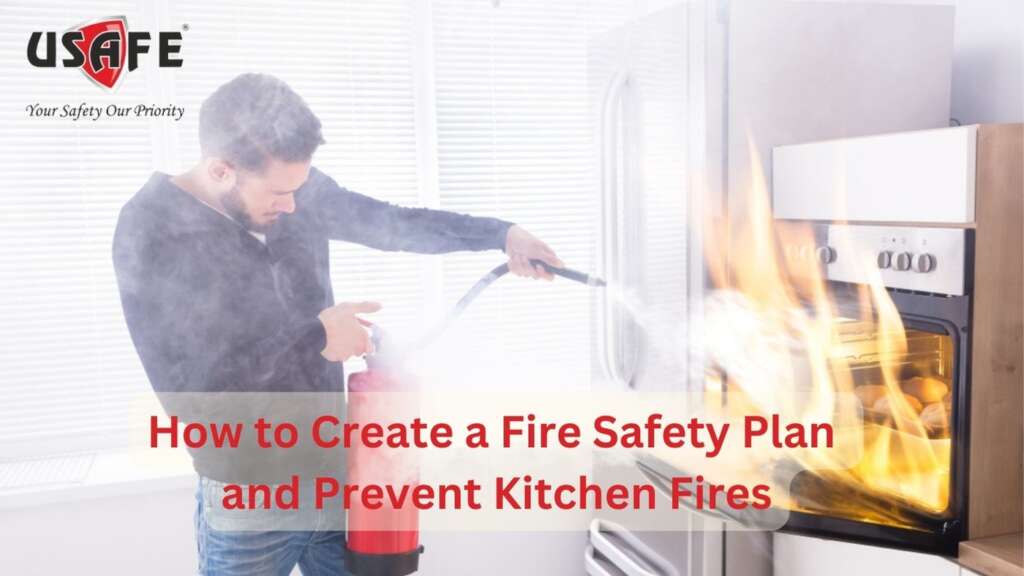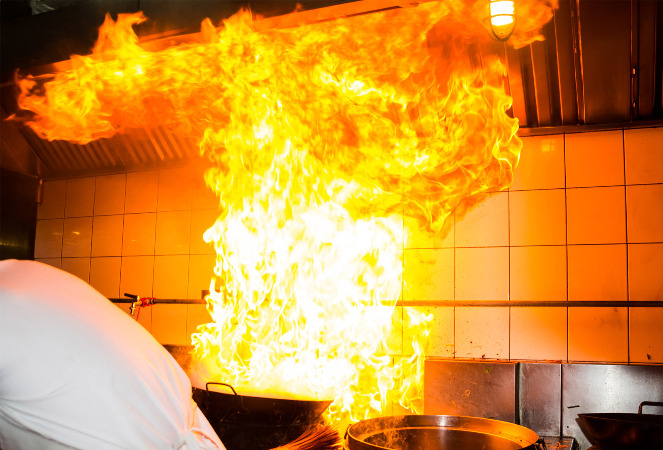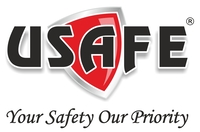Fire departments respond to over 170,000 cooking-related home fires annually.
The most common cause of these fires is someone cooking and leaving the stove unattended.
The National Fire Protection Association (NFPA) reports that every year, cooking fires result in over $1 billion in damages, thousands of injuries, and hundreds of fatalities.
Cooking is a common, everyday activity that fosters family and friend relationships, but it can also go seriously wrong. United Fire Safety and Services recommends the following actions to help keep your loved ones safe:

The Best Position to Place A Fire Extinguisher
A fire extinguisher near the kitchen can be very useful in the event of a kitchen fire. Selecting a location that is both conspicuous enough to not interfere with daily activities and accessible in case of emergency is important.
The perfect spot might be between two doorways at the base of a wall, low enough for easy access but high enough to keep children and pets from accidentally activating it.
As long as you still have a clear path to the exit, it would also be ideal to be farther away from any heat sources, such as a baking device.
Here are some tips to avoid kitchen fires. Both homeowners and tenants can keep their families safe by following safe practices and using the proper fire prevention equipment.

1. Setting up fire extinguishers in the house
The only proactive fire protection system that adapts automatically to heat, not smoke, and does not require your presence in the room to put out the fire.
These systems can provide low flow protection throughout the house using either standalone piping or home plumbing.
They have low maintenance requirements and can use low cost, lightweight piping options, which drastically lowers costs.
2. Create a fire escape plan
Proactive homeowners can take multiple steps to prioritize fire safety. However, one of the easiest and most affordable solutions is to create a plan and share it with the rest of the household.
Start by conducting a “risk survey” to identify potential hazards. Draw a floor plan of the house that includes all doors and windows, as well as two escape routes from each room.
Remember, fire spreads quickly. Teach children how to escape on their own, gather at a safe meeting place, and stay out of the house after they have left.
3. Use smoke alarms to detect kitchen fires early
It is important not to place smoke alarms too close to kitchen appliances, as ceiling-bound particles from pots and pans can cause false alarms.
Ideally, smoke alarms should be installed:
- 10 feet distance from any cooking appliance.
- No more than 12 inches from the ceiling, but no closer than four inches to the apex of a peaked ceiling.
- Inside and outside of each sleeping area.
- On each level of the home
- Over the top of stairs leading to a basement.
- Keep away from windows, doors, ducts, and other drafty areas.
Make a plan, such as marking your calendars ahead of time or setting an alert on your mobile phone or computer, to check your smoke alarm batteries once per month.
4. Keep an eye on your children and pets
If you have young children, teach them not to play with stoves, pans, or appliances, and keep them in the room while you cook.
Keep very young children in a safe environment, such as a playpen in another room.
Children under the age of five are more likely to be injured by touching hot equipment or coming into contact with hot liquids than by the fire itself. In short, the kitchen is simply not a safe environment for most toddlers.
5. Keep fire extinguishers charged and accessible
Most fire extinguishers are not intended for grease fires. However, they can effectively fight kitchen fires that consume countertops, cabinets, electrical appliances, and wall outlets.
Unfortunately, many families do not have a working High Expansion Foam Fire Fighting extinguisher or do not have it easily accessible.
While fire extinguishers aren’t particularly attractive, keeping them out of sight can be deadly to visiting family members, guests, renters, and customers for home vacation rentals.
According to our guide to home fire extinguisher selection and placement, these devices should be placed:
- Far from direct sources of heat, which could harm them.
- Somewhere readily apparent and reachable (not in the back of a sink or closet).
- Near an exit, so users can escape if the fire becomes too large.
6. Easy Accessibility
Fire extinguishers should always be installed in easily accessible locations.
Fire extinguishers are typically installed along the main path of travel in your office. This makes it easier to grab an extinguisher in case of a fire.
According to fire regulations, a person should never travel more than 25 meters to access a fire extinguisher.
Plan Ahead!
If you cannot afford to purchase smoke alarms or are physically unable to install one, the United Fire and Safety may be able to help.
Contact your Fire Extinguish Agent for more details.

